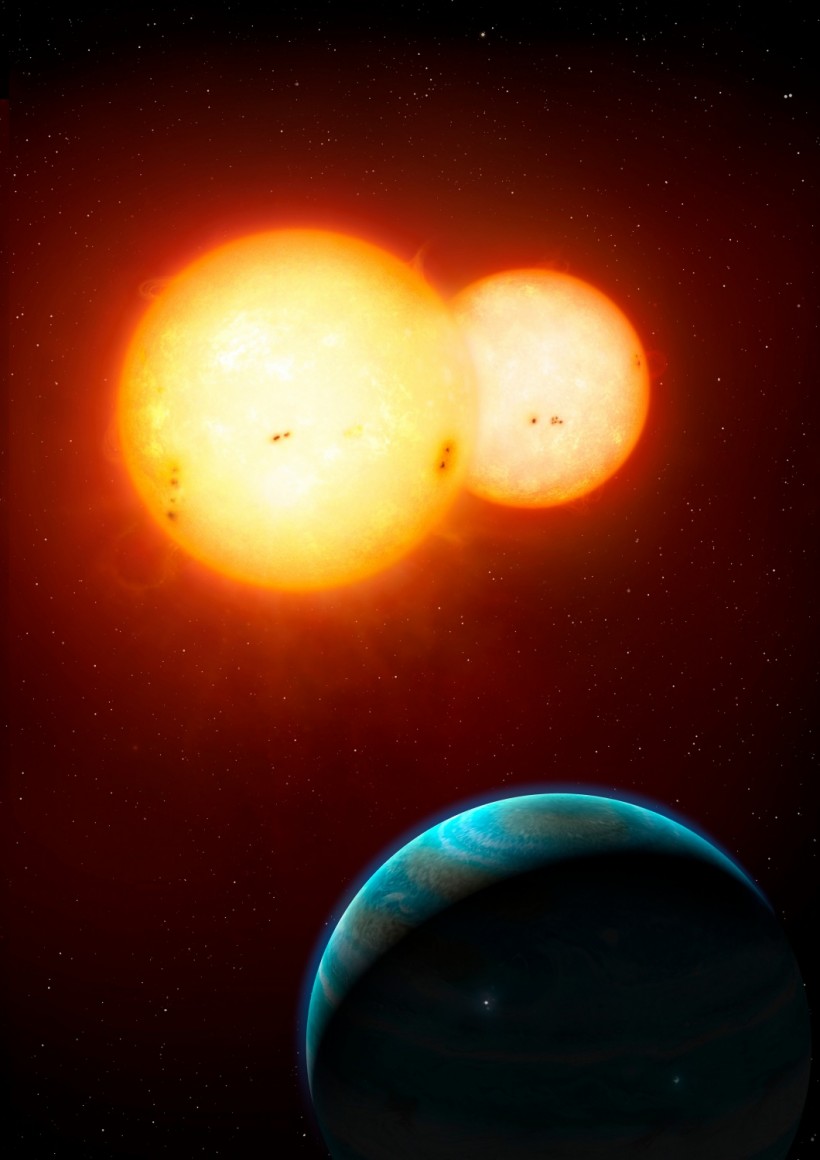Other planetary systems are similar to ours, including a set of planets and a parent star. These groups, which sit far away from our neighborhood, became an interest throughout the history of extraterrestrial life research.
For scientists, other systems scattered across space are suspects of hiding types of life forms. Experts also consider finding life even on planets revolving around two stars or binary systems.
Binary Systems and Extraterrestrial Life

A New Class of Planetary Systems: This artistic rendition depicts the Kepler-35 planetary system. In the foreground, Kepler-35b, a Saturn-size world, orbits its host stars every 131 days.
New research led by scholars from the University of Michigan, Denmark's University of Copenhagen, and Taiwan's Academia Sinica showed more evidence that increases the possibility of extraterrestrial life on other planets, particularly in the members of binary systems.
According to the authors, these planets form differently from what we know, as various factors such as gravitational pull from two-parent stars influence how they mature over time.
The binary star system, dubbed the NGC 1333-IRAS2A, was among the groups the team observed.
UM Department of Astronomy chair and co-author of the study Edwin Bergin explained that their team selected this cluster to understand more about the birth of stars and planets in this type of setup.
The team attempted to observe the most luminous star of the binary system to see how the stars form, but they got ahold of the information in a different approach, Bergin continued. Bergin added that the formation of a binary system's neighborhood relies on how each of the planets forms and the tremendous effects of the circumstances given by a double parent star.
Copenhagen's Niels Bohr Institute astrophysics specialist and lead author of the research, Jes Kristian Jorgensen, said in a UM News report that the results they collected could contribute to further studies dedicated to the search for extraterrestrial life.
ALSO READ: President Joe Biden, NASA Will Help Astronauts From Japan Fly to the Space For Moon Landing
Binary Star and Planet Formation Clue to Existence of Life
The data from the binary star system will aid the upcoming powerful instruments of the future by finding life outside the space. This information will provide more insights into how planetary groups form around various stars, Jorgensen continued.
The findings from links between binary stars and the formation of their planetary members would eventually give us definite hints of interesting systems to investigate for the presence of life, Jorgensen said.
The ALMA telescopes in Chile were utilized to monitor the binary system NGC 1333-IRAS2A, Daily Mail reports. The system is charted right at the heart of the Perseus molecular cloud, about 1,000 lightyears from our planet.
Estimates show that the two stars formed 10,000 years ago. Today, their distance from each other measures 200 astronomical units. Every 10 to 100 years, the gas and dust around the system move erratically, with the stellar couple shining a hundred times brighter.
The authors suspect these unusual bursts significantly impact the structures of the planetary bodies around them. Further studies are required to observe the system and how likely it is for comet impacts to deliver organic molecules to the barren planets.
The study was published in Nature, titled "Binarity of a protostar affects the evolution of the disk and planets."
RELATED ARTICLE: How Russia-Ukraine War Impacts Relation on ISS, Future Global Space Projects
Check out more news and information on Space in Science Times.














